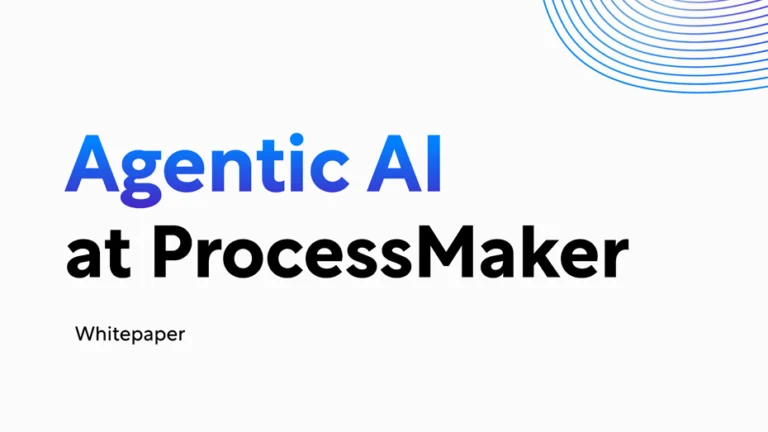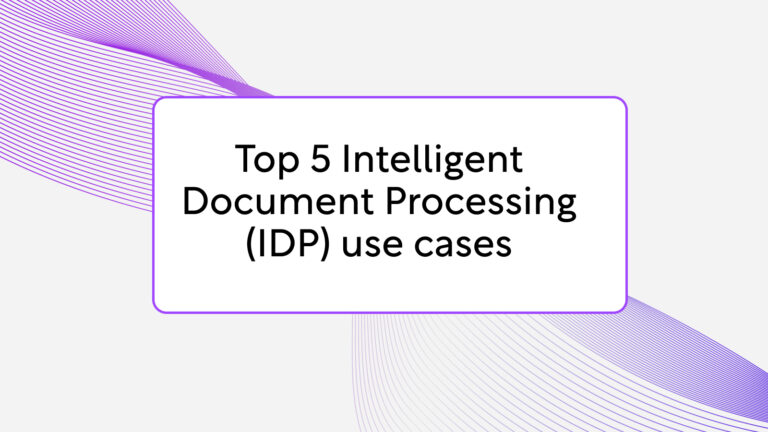It’s no secret that businesses have more data than ever before. This data contains a wealth of value with the potential to improve cost savings, redefine processes, and establish a competitive advantage. The biggest barrier? Much of its value is trapped and not easily accessible.
Companies keep starving for insights with the growing amounts of unstructured data in documents, images, emails, etc. The sea of data is meaningless unless turned into business value.
In this article, we’ll cover:
- AI for unstructured data
- Quality and findability of documents
- Extracting fundamental values and data points
- Automating repetitive tasks
- Intelligent document processing (IDP)
- Compliance with legislation
- Next steps
Value of unstructured data
For a long time, getting value from unstructured data has been challenging. Companies could not manually process and analyze the sheer volume of facts, figures, and documents. It was time-consuming, error-prone, and expensive.
However, recent advances in innovative technologies have made it possible to automate the processing of vast amounts of data, allowing companies to unleash the full potential of their content cost-efficiently.
By applying intelligent technologies for unstructured data management, businesses can benefit in four significant ways:
- Increase the quality and findability of documents
- Extract critical values and data points to structure information and streamline business processes
- Automate manual, time-consuming tasks beyond the capabilities of Robotic Process Automation (RPA) offerings
- Ensure compliance with legislation such as GDPR
Let’s discuss each of these benefits in more detail.
Increase the quality and findability of documents.
No matter how valuable or useful your data is, it is useless if no one can find it when needed. The goal is to move from recreating information to reusing it repeatedly.
However, for many organizations, the findability of information is still a big challenge. On average, an enterprise with 1000 workers wastes from €2.2 to €3.1 million per year searching for nonexistent information, failing to find existing data, or recreating information that can’t be found (Source: IDC).
Some companies have already turned their paper documents into digitalized machine-readable text to improve information findability. It’s easier to find the correct information in a digital space rather than physically going through each paper file.
The digitalization of paper documents is essential but often underestimated first step. If you do this incorrectly, all the files will be digitalized but still challenging to find.
Why? Let’s start at the very beginning.
Once you scan the paper, you’ll create a digital document. Usually, it exists only in a non-text format. So, you can read it from the screen, but the computer doesn’t recognize any words in it. Optical Character Recognition (OCR) technologies should be applied to convert scanned documents into searchable and editable text files. OCR adds a text layer on the scan, making documents machine-readable. In this case, they are easily retrieved, edited, and searched.
But there is a catch.
Even the most sophisticated OCR technologies make mistakes and misinterpret characters. As a result, the information you store digitally can be incorrect; thus, it can be challenging to find it back.
Extract key values and data points to structure information and streamline business processes
Unstructured data is difficult to process and organize because it has no pre-defined format. Think of the various types of documents like employee contracts, vendor agreements, onboarding materials, etc. They all have different formats.
To bring structure to these unstructured documents and improve the use of information, employees have to create metadata. It’s a basic description of the document that may include the contract number, deal details, or names of the parties involved.
While metadata is crucial for search, information compliance, retention policies, and workflows, it is usually maintained poorly. Very few employees bother to do this; if they do, this is often inconsistent across an organization.
Manual metadata creation is a slow, painful, and error-prone process. As a result, companies typically misfile up to 20% of their records – thus losing them forever (Source: ARMA International).
Fortunately, AI solutions can automate metadata extraction and eliminate human errors. They can “read” and “understand” the content of the documents and extract key values such as the company’s name, contract due dates, locations, etc. This technology significantly reduces the time spent on document processing and allows employees to focus on other work that brings more value to the organization.
Automate manual, time-consuming tasks beyond the capabilities of Robotic Process Automation (RPA) offerings
Robotic Process Automation (RPA) proved to be an ideal solution to improve company efficiency by automating simple, repetitive tasks. However, unstructured data is still a significant challenge for RPA.
RPA can only replicate pre-established actions. It needs to be explicitly programmed to extract metadata for every document type. And with unstructured documents, teaching the bot exactly where to extract the relevant information is nearly impossible. Hence, there is a need for Intelligent Automation. AI solutions can analyze documents intelligently the way a human would.
Luckily, some technologies take unstructured data from a nuisance to a non-issue. Robotic process automation (RPA) once seemed like the answer to all problems, but that was before intelligent document processing (IDP) emerged. Instead of being limited to structured data, intelligent document processing takes it to the next level.
Additionally, unlike RPA, AI solutions continuously learn from experience and improve performance over time automatically. They can operate with little to no human intervention.
For instance, with ProcessMaker IDP, we aim to create a collaboration between humans and artificial intelligence. We give computers the tools to learn from the knowledge experts to make decisions. When the machine is in doubt, it requests employees to validate the results. And in case of an error, the algorithm is retrained. This process allows ProcessMaker IDP to learn constantly with the human expert in the loop.
Ensure compliance with legislation such as GDPR
The final major benefit that Intelligent Content Management solutions offer is improved compliance.
As we mentioned earlier, data has hidden value. But at the same time, it might contain hidden risks. Failing to comply with GDPR regulations can incur fines of up to €20 million or 4% of your company’s annual global revenue. Taking care of one’s data and ensuring compliance is a top priority for all organizations.
AI solutions, for example, can detect sensitive information in documents and flag them for special handling. Automatic classification and processing can ensure that documents will be retained according to the legal and legislative requirements. Intelligent solutions can determine the required retention periods based on the document type and trigger a workflow to review the document when needed.
How does AI boost Hyper-Productivity?
Artificial intelligence can be a game-changer for your organization in more ways than one. One of the most significant ways you can transform your workflow is by boosting Hyper-Productivity. Instead of simply being productive, your team can become Hyper-Productive, completing work faster and more efficiently than ever.
Are you trying to keep your company’s competitive edge? Talk to our team about how you can leverage AI to transform your business processes.





